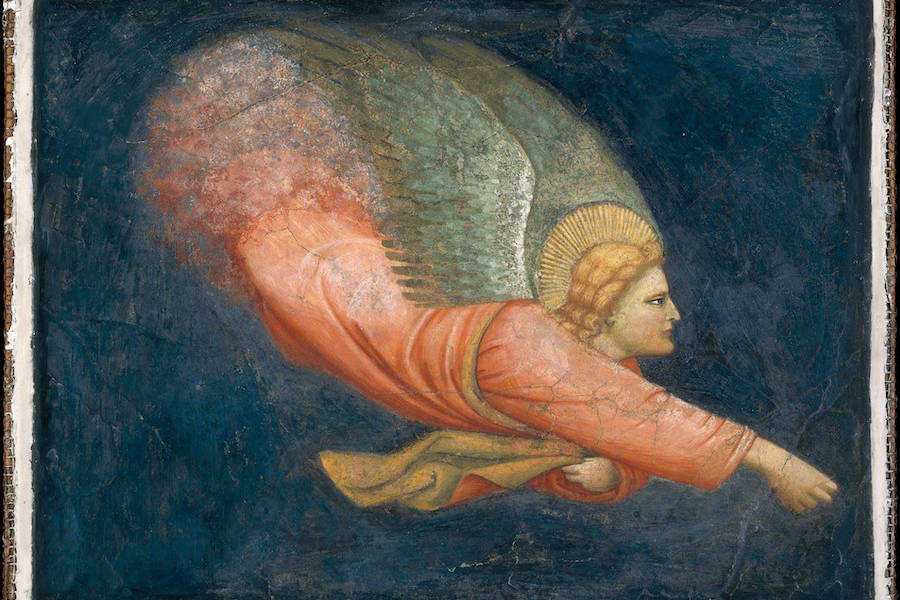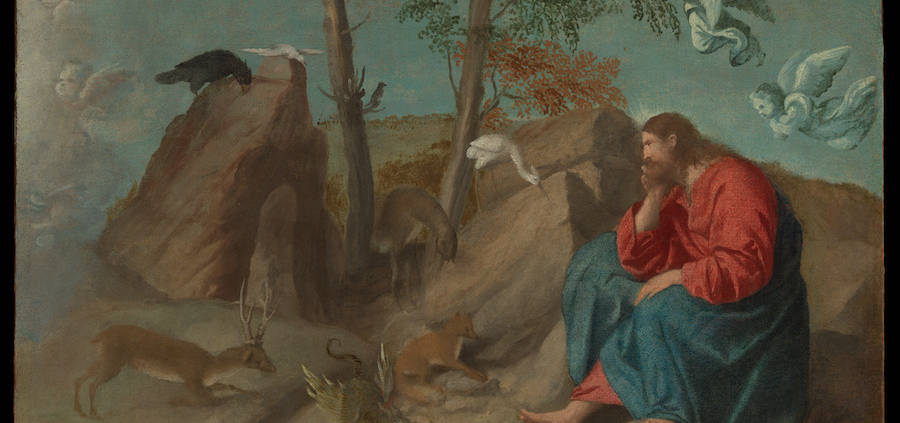Experiencing Christness by Wally Swist
To know the truth that we are not Christ but that all of us may be, through great ardor, like Christ, or to exhibit Christness, is to enter upon significant spiritual providence. Christness can be many things—and is many things. Novelists such as John Clellon Holmes, who authored the semi-autobiographical Go, considered to be the first novel of the Beat Generation, wrote about the Christness of a generation who had weathered the end of the Great Depression and World War II. This generation danced to Big Band music and admired Gene Kelly, Ginger Rogers, and Fred Astaire, but they also bore the brunt of the Christness on their shoulders for having persevered through economic hardship and the defeat of fascism under Adolf Hitler and Benito Mussolini.
The Christness of this generation can be observed in the demeanor of family members who came of age during that era—fathers, mothers, grandfathers, grandmothers, aunts, uncles—who, through their acquiring Christness, emanated an unassuming integrity. These were people who became used to assuming responsibility for doing selfless things, quietly and without much fuss. They shouldered their loads. They built dams and went to war. They worked in munitions factories and joined one of the branches of the service or the Merchant Marines. They exhibited Christness—so much so that the moniker “the Greatest Generation” stuck. They danced, indeed, to celebrate life. But as novelists of the time pointed out, they looked “beat.” This was their Christness.
My uncle Steve had a look of Christness. He was married to my aunt Joan, my mother’s sister. He was both husband and caregiver to Joan. Joan suffered from what seemed to be a perpetual nervous condition, but Steve was always willingly attending to her, quietly and unassumingly. Steve had lost part of his stomach to cancer. There were always dark inverted half-circles under his eyes, but concomitant to this was a radiance that shone through from beneath the skin of his face, as in a painting by El Greco. This was Uncle Steve’s Christness. This was his selfless caregiving to Joan, which was healing for her. It may not have healed her permanently, but the Christness that was channeled to her through Steve was, indeed, healing.
When my mother died, after she had walked me to school on the first day of third grade, Uncle Steve and Aunt Joan drove from Newark, New Jersey, to Ansonia, Connecticut, a milltown in the Housatonic Valley. I remember Steve entering the small flat then sitting on the bed, whose springs creaked, and my running over to him, his suit jacket smelling of cold and rain, and how much warmth I felt in his embrace. I was graced by Uncle Steve’s Christness. In Steve’s Christness I felt healed. Steve had Christness to give.
Seeing God in the Trees
My mother and I had a close relationship. She was both clairvoyant and psychic, intelligent and giving. She was also emotionally vulnerable and sometimes psychologically compromised. However, she was responsible for giving her son many gifts, including getting my father to acquiesce in purchasing a set of World Book Encyclopedias so that I could begin reading early. I was probably the only five-year-old in Miami in the mid-fifties to have been presented with such a great gift. In my mother’s mind, if she taught me the alphabet at a young age, then I should have the books to go with it. I poured over those volumes on idyllic afternoons, dust motes floating in the pillars of sunlight. They are luminous memories. My mother’s Christness shone through, and, as I remember, so did her joy.
What is perhaps my most indelible childhood memory is our walking through parks in Miami, my mother and I deep in spiritual conversation. I would ask her questions and she would try to answer. “What is God?” I asked once. I believe she answered that God was everywhere, that God wasn’t a person or a thing, that God was much more than just an idea, that God was even beyond ideas. I then remember furrowing my brows and thinking as deeply as I could, or perhaps ever had until that point, and in doing so I looked up into the crowns of the palm trees. Something glimmered there for an instant, perhaps even a long moment. It glimmered in the swaying of palm branches, under the cerulean of a Floridian sky, the tang of salt in the wind.
I announced to my mother what I had seen, and what I said was, “I see it right there. I see God in the trees.”
The experience is not exactly an example of Christness so much as an example of the Christness issued through my mother so that her son could have a notion of what Christness could be, even before he really knew it.
Seeing the Face of Christ on the Basement Wall
Years passed before I had another experience close to this. However, I believe I needed to earn my own Christness. My father remarried after my mother collapsed from a cerebral hemorrhage—after she had walked me to the first day of third grade, in a new school, after we had moved back to Connecticut where my mother thought I would have a better life, as she intuited it. I was a sickly child, and she thought since I was born in New England, that was where I should be. It called her, and she thought it also called me.
I believe my mother knew she would soon die upon our returning to Connecticut. There is a scene in a film I admire, The Dig, with Ralph Fiennes and Carey Mulligan, who portray the self-taught archeologist Basil Brown and landowner Edith Pretty. It is a film about discovering a seventh-century Anglo-Saxon wooden boat buried in a mound of the Sussex earth. But it is also a film about closeness and beauty, especially when Mrs. Pretty’s son entertains her one night when they are looking up at the stars, and she reaches over to hold him close to her. Mrs. Pretty knows her death from a heart condition is imminent. I remember my mother holding me like that the night before she died. That is Christness.
However, the marriage of my father and stepmother was toxic. I didn’t readily recognize the alcoholism of my stepmother until I had some interim therapy in my mid-twenties. But I do recall the session my therapist helped me break through to realization that it wasn’t my fault that my father and stepmother failed in their marriage, but that it was on them and not me. The therapist’s office was located on Prospect Street in New Haven, and I distinctly recall walking down the long hill of the street on my way to my shift at Yale bookstore. With each step I felt a weight being lifted from my shoulders, which was not Christness but my redemption, a kind of vindication, a partial recovery.
So there were years, years which drifted into each other, creating a desert through which I had to survive, to suffer through, to enable my own Christness to only begin to shine within me. There were the years when I was in high school when my stepmother locked me out of the house at night. There was my first day of my senior year—the honor student, the managing editor of the high school newspaper—who would skip the first day of school because my father clocked me and gave me a shiner. There was the chip I wore on my shoulder all that year, as I hunkered around the halls like an unhinged James Dean, quitting the school newspaper and skipping classes whenever I could. Looking back now, I can only imagine my angels were there to attempt to guide me because I had no other guidance except for Martin Esslin’s Theater of the Absurd in a back pocket of my blue jeans.
That was not Christness but a steerage through the long desert night. However, I did rediscover Christness, the Christness that I hadn’t experienced since I saw God in the trees as a child with my mother; or perhaps this time I had discovered Christness for the very first time, especially on my own.
I had the great fortune of practicing zazen with a small group of devotees, which included the poet and translator Stephen Mitchell, who was then a grad student at Yale, meditating in the basement of the Yale Divinity School Chapel. The aura there was special. It exhibited a deep quiet. Sometimes incense burned, its aroma becoming more profound as the smoke rose into the air. On two occasions during meditation I broke through into something else, somewhere else, to another place entirely, to somewhere beyond myself. I didn’t necessary float, yet I found myself moored in nothingness and found comfort and stability there, my eyes trained, as they should be in Zen practice, on the wall in front of me, a simple basement wall of stones set in place. And there I saw the face of Christ appear.
The visage didn’t startle me but made me calm. Christ’s face shone steadily, though it didn’t necessarily radiate in grandeur. It was gracing me with its simple presence, but in all of its sublimity and subtlety. Both times I remember breathing in the aroma of sandalwood and thinking it was incense, and both times I remember asking if there were any incense lit, and both times—I’m not sure why I was so surprised—the answer was that there was no incense lit at all. I remember recollecting myself in the semidarkness of the basement of the chapel before ascending the stairs, knowing that I had been given a significant gift and feeling gratitude for it
This was my first real experience of breaking through into another consciousness, after surviving the journey of the dark years in the desert, of Christness. After all, a realization of Christness can only come when one has just begun to be ready receive such a gift, to acquire enough humility to experience what Christness can be.
Awakening and Visitation
Steve Taylor, senior lecturer in psychology at Leeds Beckett University and past chair of the Transpersonal Psychology Section of the British Psychological Society, has authored several books, including The Leap: The Psychology of Spiritual Awakening. I have read many of Taylor’s books aloud to my partner, Tevis. In one of them, he succinctly states that evangelicalism is not a religion. I couldn’t agree more.
Evangelicalism, in my estimation, is too linear in its ideology to allow enough light into it. It is too rigid. I do not mean to imply that the practice of spirituality is without discipline: through discipline, we can be open to Christness; through humility, we have access to and may observe Christness. However, in doing so, I do not believe we need to demand what others do with their bodies. Christness can mean standing up to the Pharisees in the Temple, in refusing to worship any false God. Christness can also mean refusing to be so emboldened as to place demands on another’s body and life, but to respect the sanctity of women and womanhood.

Unknown North Italian Painter, “Two Angels,” ca. 1330
In reading Taylor’s disciplined research regarding awakening experiences, we realize that this is our birthright. Many prepare a lifetime for such an awakening. I practiced zazen, and I have practiced an inner prayer, the Jesus Prayer, for some fifty years, and still feel like I am just beginning to inhale and exhale its sweetness. Tevis has practiced what Eknath Easwaran describes as “passage meditation”: the luminous reading of a passage of spiritual literature on a daily basis.
Some individuals don’t seem to need to have any practice at all but somehow miraculously experience an awakening experience. However, after much ardor and not without a modicum of strife, both Tevis and I experienced a shared awakening experience in late October 2018. We sat down for a glass of cold water after an exhilarating walk only to enter into a light that thrummed between us for more than two hours, a kind of gentle humming of illuminated nothingness that consumed us, upon which and afterwards nothing was ever quite the same again. The intensity of the experience did eventually diminish, but its memory is never mitigated by time or distance.
The awakening still affects us now, even though Tevis suffers from Alzheimer’s and I oftentimes struggle as her caregiver. However, there is Christness in this, too. Oftentimes we believe an awakening experience solves everything, that nothing can be beyond it, but Christness is not at all like this. Nor is awakening. Both experiences are about going beyond, and they are always grounded in what is real and true.
Both Tevis and I experienced several angelic visitations in early 2019. They certainly took us by surprise by their cleansing powers, by their modalities of light, by their sheer force. Why were we made privy to such celestial holograms, what some would scoff at as being flights of the imagination? In giving much consideration to this, I have come to realize that through whatever spiritual mystery Tevis and I were opened to was due to the ardor of our practice. However, perhaps even more so, I believe that we experienced such events in order to prepare ourselves, and for me to prepare myself, for what was to come: the onset of Tevis’s Alzheimer’s that demanded my becoming her caregiver.
There will always be a mystery about our experiences of awakening and visitation, along with an awareness that these experiences provided a reintroduction to our Christness: our humility, our acceptance (or even unacceptance) of sorrow, our breaking though, on occasion, to laughter and delight. We know what it is to be grateful just to walk the earth another day, to rejoice in a moment that expands in all directions, in which we sometimes revel in joy and other times meet with regret. We break through in our humanness to something more centered, more expansive, more spiritual: into our being conscious of something more sublime but substantial: our Christness.
In trying to imitate Christ, we begin to actively love Christ. If one has active spiritual practices, one can experience aspects of Christ. This “Christness” is never superfluous but always rises with an abundance of resilience. “Christness” lifts. “Christness” sheds light. It never obstructs. It never is out for itself. “Christness” seeds itself. It pours one toward another in goodness and goodwill. “Christness” is not maudlin or saccharine. It is is real. One acid test about it is that it is also aloneness, real aloneness, the kind of aloneness that we imagine that Christ, as a man, suffered in the desert, in those forty days and nights of being taunted by Lucifer, who wanted Christ for himself. The essential thing about “Christness” is that it is never about oneself; it is always about someone else, even the simple act of helping or caregiving for someone else, as I can only attempt in being a responsible caregiver to Tevis. ♦
Wally Swist’s books include Taking Residence (Shanti Arts, 2021), Evanescence: Selected Poems (Shanti Arts, 2020), and On Beauty: Essays, Reviews, Fiction, and Plays (Adelaide Books, 2018). A Writer’s Statements on Beauty: New and Selected Essays and Reviews was published by Shanti Arts in 2022. His latest collection, Aperture, was recently published by Kelsay Books.





Leave a Reply
Want to join the discussion?Feel free to contribute!